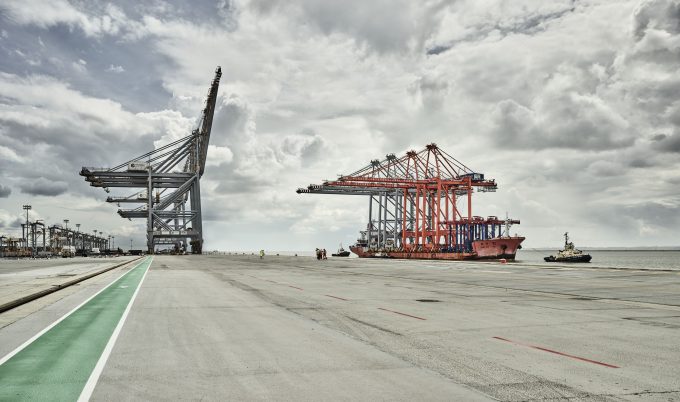Another strong month for US ports as container flows continue to rise
The main US ports enjoyed another stellar month in March, according to new figures from ...

Communications equipment found on Chinese-manufactured quay cranes in the US has prompted fresh fears of espionage.
Equipment manufactured by state-owned ZPMC, one of the world’s biggest crane builders, has come under scrutiny at US ports.
A congressional probe found, at one port, 12 cellular modems on crane equipment and another in the port’s server room; the port authorities maintaining they had not specified that the cranes have these capabilities and saying they did not know why the communications equipment had been installed.
While the ports under investigation have not been identified, ZPMC cranes are known to be operated at terminals at Los Angeles, New York/New Jersey, Oakland, Houston, Miami and many others.
The American Association of Port Authorities (AAPA) has previously dismissed such claims as ‘media alarmism’, saying mid-last year that “modern cranes are very fast and sophisticated, but even they can’t track the origin, destination, or nature of the cargo”.
But the concern is that, not only could cranes be used by the Chinese government to amass strategic data on US cargo movements, but in the event of a major conflict – say an attempt by China to annex Taiwan – a Chinese ‘kill-switch’ could effectively blockade America.
Rear Admiral John Vann, head of US Coast Guard cyber command, told hearings last week: “We have found, I would say, openings, vulnerabilities… by design, these cranes may be controlled, serviced and programmed from remote locations.” However, he added that “malware or Trojan horse-type software” had not been found.
Particularly in the age of internet of things (IOT), it is not unusual for heavy equipment to be fitted with communications systems, both for collecting data for use by their operators and for exchanging data with their manufacturers for condition-monitoring and maintenance purposes.
The ability to monitor and control cranes and other port equipment by remote connection — and without human operators – has until now been regarded as a point of pride by ports, with other port equipment manufacturers like Konecranes, Kalmar and Liebherr all offering similar capabilities.
ZPMC port cranes operating entirely by remote control can be found at several of the world’s biggest container terminals, including Jebel Ali, Singapore, Rotterdam and, unsurprisingly, Shanghai.
However, Mark Green, chair of the House Homeland Security Committee, accused China of “systematically burrowing” into US infrastructure.
But Mao Ning, spokesperson for China’s foreign ministry, said: “The accusation that China-made cranes pose security risks is completely unfounded. We firmly oppose the US… abusing state power to go after Chinese products and companies. Weaponising economic and trade issues will exacerbate security risks in global industrial and supply chains and inevitably backfire.”
Comment on this article